Food sauce is indispensable, that’s what most Vietnamese diners think. Without appropriate sauce, the dish can’t be complete.
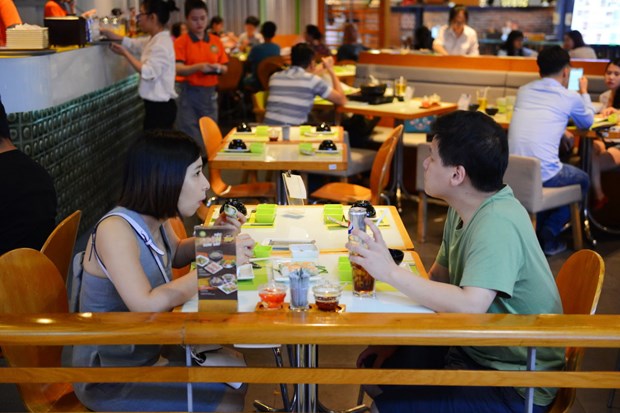
Food sauce is indispensable.
Once
my foreign friends and I had snacks and beers on a street restaurant; we
ordered several dishes and every dish came with a different sauce. It really
wowed us.
I
told them that even the same type of sauce could taste different since people
in different regions had their own recipes of using such same ingredients.
Food
sauces of Vietnamese cuisine are so diverse and abundant that they have become
the spirit of culinary culture and the significant element to differentiate
Vietnamese food to other countries’.
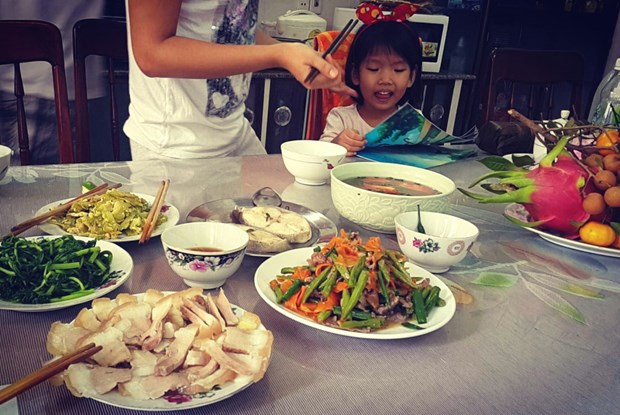
Food sauces on dining table.
Decisive food sauces
From
daily meals to luxurious parties, food sauces always take their places on
dining tables. A complete meal must have main course, vegetables, soup, and a sauce
cup.
Depending
on serving dishes, the sauce cup can be pure fish sauce with fresh chili or
mixed fish sauce (with garlic, sugar, and lime juice or fresh ginger), shrimp
paste, soy sauce, fish broth, fermented soy paste, lime and pepper salt, or
thicken fish sauce with crushed pepper.
Although
sauces are side dishes, they play a very important role, which decides final
tastes of main courses. Can’t call deep-fried fresh fish delicious without a
cup of mixed fish sauce, garlic, and chili; a dish of pig pluck must go with
shrimp paste.
Steamed
seafood taste the best with lime-pepper salt and bland boiled assorted
vegetables will be much more flavorful by a thick fish sauce and pepper bowl.
Boiled
chicken must go with pepper salt and minced kaffir lime leaves while duck meat
requires fish sauce and smashed ginger.
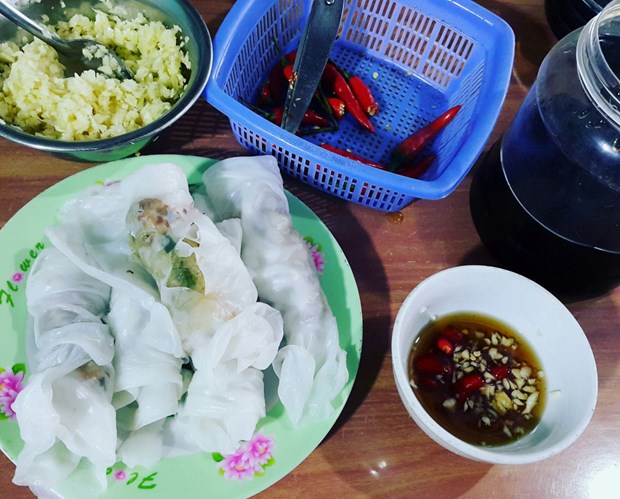
Food sauce can be simple as pure fish sauce with chili and garlic.
Besides
fresh ingredients and accurate cooking processes, Vietnamese chefs must
competently practice different types of food sauce.
There
are dozens of food sauce recipes. Sometimes, the same ingredients as fish
sauce, garlic, sugar, chili, and vinegar or lime, can make different sauces
since regional tastes are totally different.
For
instants, southern people use much sugar when mixing fish sauce for fried fish
while grilled pork with fresh rice noodles in Ha Noi only matches bland fish
sauce with sour pickles.
Shellfish
dishes in the south love pepper salt with drops of lime juice or butter sauce
with oiled green onion and roasted peanuts. Differently, boiled snails in the
north must have fish sauce with fresh ginger, lime leaves, and fresh chili. No
one can accept boiled snails without that typical fish sauce.
Another
famous example is in a seafood restaurant in Mui Ne (Binh Thuan province).
Cooks use smashed whole green tamarinds to mix with fish sauce, garlic, and
sugar. The taste is memorably incredible with deep-fried snakehead fish.
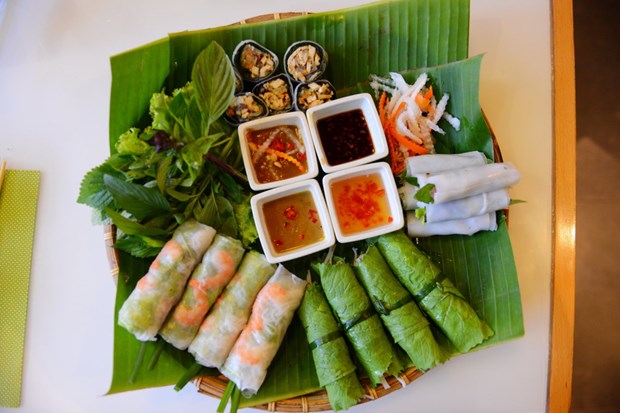
Spring rolls with 4 different types of sauces.
Chef
Anh Duy – lead of Binh Quoi I team that won the 1st prize, said, “Food sauces,
especially for appetizers, play the most important role for the success of the
appetizers and the whole menu.”
Therefore,
Anh Duy and his team worked so hard on their sauces. On salmon dish with wild
vegetables, Anh Duy used roasted sesame and peanuts to make sauce with soy
sauce and Doi seeds.
Moreover,
grilled shrimp paste was combined with stimulating pineapple sauce, which was
made from smashed grilled pineapples and other sweet spices.
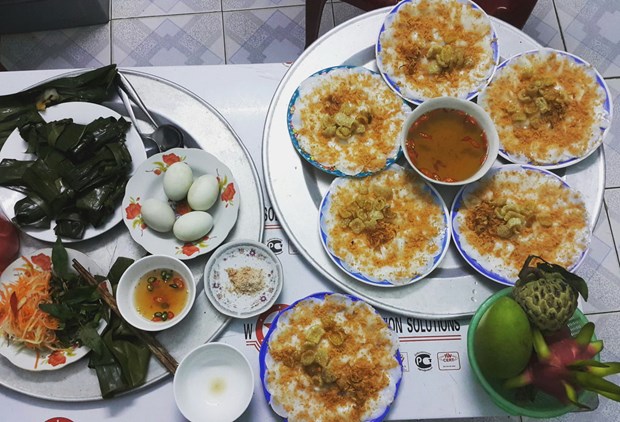
Food sauces play incredibly important roles for the success of whole dishes.
With
grilled ducks served with moringa salad, mashed purple yam, and special duck
sausage, the team used moringa leaves not only to season duck meat but also to
mix with other herbal leaves (dill, mint, green onion) to create a delicious
green sauce for their salad.
Vietnamese
food, to succeed or to fail is depended mostly on sauces. Without appropriate
sauces, even sophisticated dishes are not close to being complete.
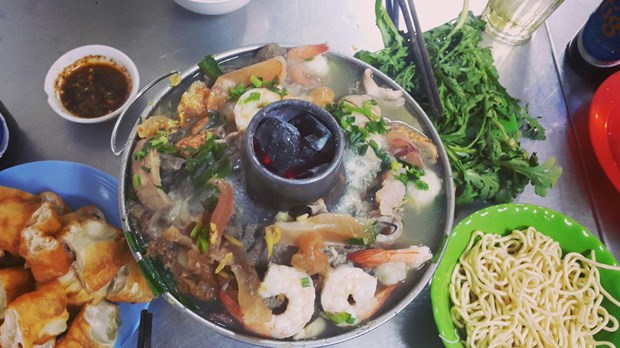
Even hot pot need good sauces.
Philosophy of food
sauces
Just
a sauce cup right in the center of dining table of daily meals can carry the
whole philosophy of life with all tastes – sour, hot, salty, and sweet.
The
Vietnamese believe that food sauce is not only a side dish to enrich their meal
but also a center point connecting people together on a dining table.
Everybody
has different hobbies of food but they all use the same sauce cup during their
meal. How they use chopsticks or how they interact with the sauce cup shows all
table manners.
A
right food sauce for a dish is also a chain that can link people to their
notable memories of their hometown.
With
wanderers and runners like us, it was amazingly happy if we can find a cup of
fish sauce smashing with fresh chili, garlic, and drops of lime juice to go
with boiled rau muong.
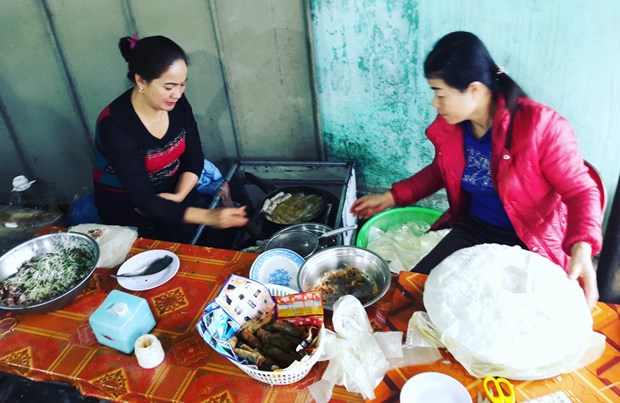
From all over regions, food sauces have proved their incredible charm.
Food
sauces in Vietnamese cuisine can be odd with foreigners because we also have
used smelly food, such as sauces from fermented seafood (fish, shrimp,
shellfish, crabs and other seafood).
But
if you taste it and like it, you’ll love it for life. For instant, fermented
fish sauce mixed minced fresh pineapple, garlic, chili, and sugar is an
indispensable sauce for flank beef dipping vinegar or steamed snakehead fish
served with fresh vegetables.
Fresh
rice noodles and tofu in Ha Noi must be served with shrimp paste, foamed with
sugar, kumquat, and hot chili. Fermented tiny shrimp sauce in the south works
best with sour fruits as green mangoes or makok.
Along
middle coastal line of Viet Nam, there is a super-hot specialty called
fermented shellfish, which usually go with steamed fresh squids. Once you try
it, you have to memorize it.
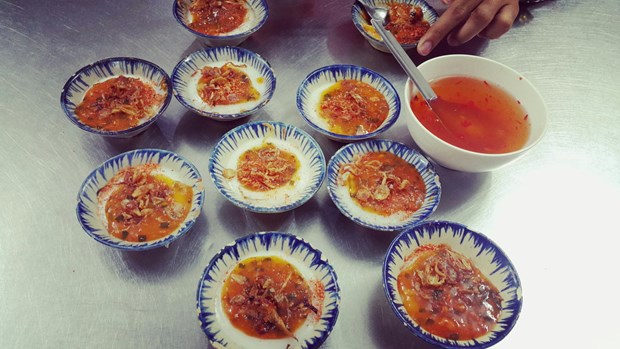
Sauces for bánh bèo (a type of rice cake) are different in different region.
So,
those tiny sauce cups became fundamental parts of Vietnamese cuisine.
Vietnamese people usually don’t really enjoy Vietnamese food in other countries
because those dishes just lack the right sauces.
From
common ingredients, such as garlic, chili, lime, ginger, lemongrass, peanut, tamarind,
black pepper, fish sauce, sugar, fermented soybeans, green papaya, kohlrabi,
coconut juice, or even chicken liver, a map of food sauces has been building on
all over the country, contributing to make Vietnamese cuisine more diverse,
typical, and enchanted.
By Tuoitre